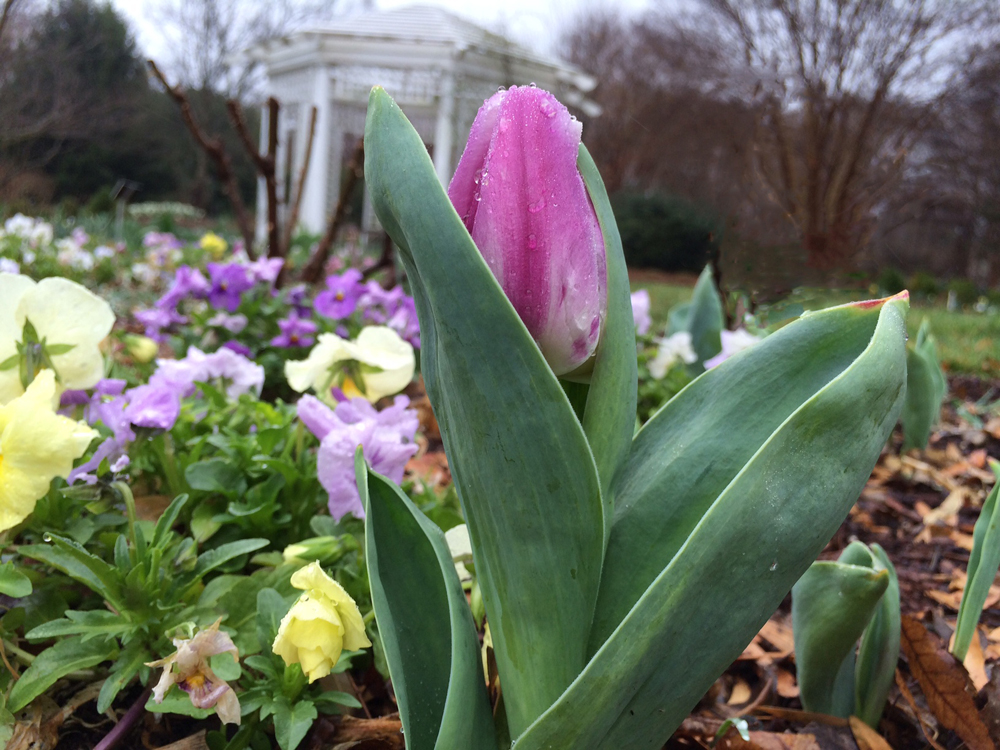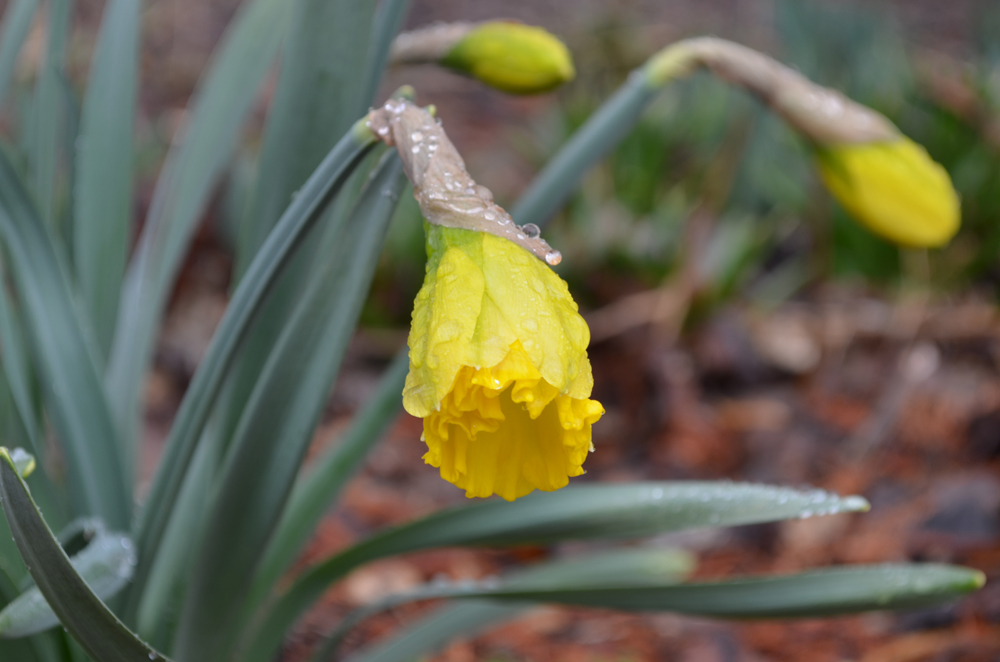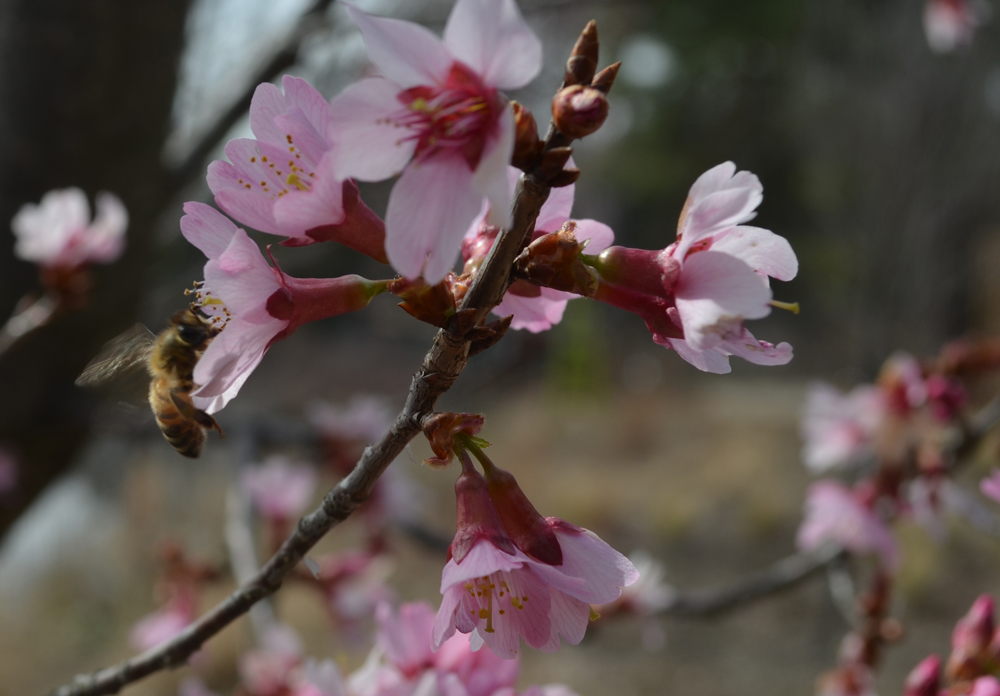Cracking the Code to Nature’s Calendar

“Growing degree days” is a scientific calculation used to help predict spring arrivals like this tulip, ready to bloom in Grace Arents Garden.
Predicting the future can be tricky business. It’s the stuff of tea leaves and tarot cards, Magic 8 Balls and Ouija boards. And yet, for farmers, horticulturists and even home gardeners, it’s helpful to know ahead of time when a weed will go to seed, or a pest will pupate so that we can schedule management activities relative to that event. But Mother Nature is loath to share her secrets.
So, we have developed a more scientific method called Growing Degree Days. GDD is a mathematical calculation that enables us to predict the timing of an organism’s life stages. Nature takes her cues from temperature, sunlight and precipitation when she sets the schedule for annual life cycles: birds migrate, flowers bloom, leaves turn and animals breed, all in response to climate conditions. Temperature triggers growth and each developmental stage of a living organism has its own cumulative heat requirement. It stands to reason, then, that if we track those climate conditions and compare data year over year, we can begin to build a dependable timetable for predicting the life stages of each organism. GDD science is more than a weather forecast. It is a useful way to foretell the future, one degree at a time.
Scientists have done just that. Through years of carefully controlled laboratory experiments and field research they have established upper and lower development thresholds for common organisms based on air temperature. An organism’s development stops when the temperature drops below its lower threshold or when temperature rises above its upper threshold. Like bookends bracketing the sweet spot of ideal growing conditions, this is the science of phenology. The annual calculation starts on the biofix date for a particular species, the day on which its degree days begin to accrue each year. We estimate its development by totaling the number of degree days between the upper and lower temperature thresholds throughout the season.
Greenhouses use GDDs to schedule the bloom of seasonal plants like holiday poinsettias or Easter lilies by using temperature to control the progress of the plant’s life cycle. Farmer’s use GDDs to predict the suitability of a crop for a particular region, plan planting dates and schedule harvests. The timing of insect and weed control applications are based on pests’ most susceptible life stage. Fertilizer is applied when plants need it most. And crop development is synchronized to coincide with pollinator life cycles, making sure that plants are flowering when pollinators are feeding.
“When gardeners understand the phenology that all organisms follow, we are able to allow them to reach their full potential,” says Joel Koci, Virginia Forestry Extension Associate at Virginia State University.
Most regions of the country have their own GDD calculator or chart based on GDD data for your area. And if you’re really serious, you can help collect and report data by participating in a citizens’ watch phenology program like FrogWatch USA or Earth Alive.
When spring arrives at Lewis Ginter Botanical Garden, “everyone asks us to predict when their favorite flowering plant will bloom,” reports Garden Horticulture Director Grace Chapman Elton. “It’s the question we hear more than any other this time of year and using GDD’s helps us give a more educated prediction.”
Of course we want to know. “The expectation of happiness is happiness itself.” (Jane Austen, “Sense and Sensibility”)

